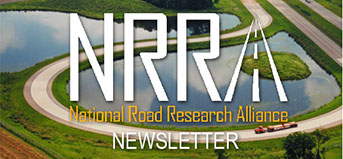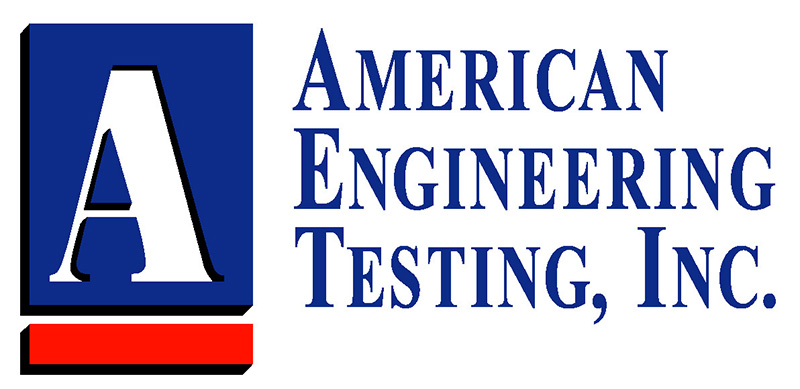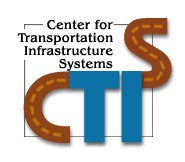NRRA Newsletter: March 2017

After the Flood: A decision tree approach to reopening roads
By Jo Sias Daniel
It’s that time of a year again for many of us: flooding season. When the flood waters finally recede, pavement engineers and geotech professionals face some tough decisions. The public clearly wants the road opened as soon as the water is gone, but is that always the best choice? Could that do significant, costly damage to the road?
Weighing these choices is what prompted FHWA to fund a project to develop a risk-based approach to assessment of flooded pavements. A research team that includes faculty at UNH, Worcester Polytechnic Institute, and Villanova University are working together to develop a decision tree for reopening roads after a flood. It’s an attempt to capture all the factors a decision maker should consider, tempered by costs and other practical realities, and it will provide an engineering-based decision for agencies.
Just to be clear, we are talking about a road that is not visibly flood damaged or washed out. This decision tree is for a road that appears to be normal.
Risk-based analysis
The decision tree is based on a risk-based analysis. For example, in some cases it might be worth it to perform FWD (Falling Weight Deflectometer) testing on the road, but only if it will give you information, or additional accuracy, that you don’t already have. Otherwise, don’t waste the time or the money. Other factors that weigh into the decisions are questions such as:
- What kind of loads does the road handle (including heavy repair vehicles that might be responding to the flood damage)?
- What are the subgrade materials?
- What is the pavement structure?
- How important is the roadway and are the available detours long and onerous or easy to navigate?
- How old is the pavement and is it scheduled for rehab soon?
In most cases the decision tree has to balance potential damage to the road against access.
Know your base
The part of the pavement most likely to be affected by flood waters is the unbound materials—the base and subgrade layers. The finer the materials in these layers, the more likely they will be adversely affected. I don’t have to tell you how this could affect the stability of the road above.
In many cases, we know what’s under the road in terms of subgrade and base materials...but not always. With older roads and secondary roads, the records for the road’s structure may not exist. Finding that information may take some digging.
How accurate do you need to be?
There won’t be a lot of surprises in this decision tree. The only question the decision-maker needs to answer that might give him or her pause is: what’s your tolerance for failure? As you put the data into the tree, you need to weigh the accuracy of the information you need to gather against your ability to say “that’s good enough.” Finding that tipping point is going to take a bit of self-knowledge.
Asphalt or concrete?
This decision tree was designed to work for either concrete or asphalt pavements, but it is typically more critical when you are analyzing a flexible material such as asphalt. Since subgrades are most affected by flooding, asphalt is likewise more vulnerable to the most damage.
I hope when we are finished with this tool, it helps agencies that are making these tough decisions after a flood. We will let you know when the tool is available in a few months.
Jo Sias Daniel, Ph.D., P.E., is a Professor of Civil and Environmental Engineering at University of New Hampshire and an associate member of the NRRA
Editor's Note: This tool also might be a NRRA topic of interest in the future, and it shows the power of NRRA membership. Jo Daniels (University New Hampshire) and Soheil Nazarian (University of Texas El Paso) are currently looking into the feasibility of using MnROAD for future testing and verification of the models used in this software. MnROAD’s stockpile area could provide an area to artificially flood two different asphalt roadways while we monitor it.
Research Pays Off—Upcoming Topics
Road Research Pays Off provides a monthly seminar to highlight research topics that will make an impact on the work done as part of the National Road Research Alliance. Join us on March 21 at 10 a.m. (CST) for a webinar called “Minnesota's use of Geogrid and current advancements ”
The presenter is Jon Siekmeier and here's an abstract of what he will be talking about:
Mechanistic-empirical flexible pavement design requires performance-based properties for all layers supporting the asphalt surface. Pavement distress can be caused by problems in the pavement foundation and therefore pavement design and performance can be improved by appropriate process control during construction to assure materials meet design expectations. Adequate density and moisture content during compaction are important, however satisfying traditional density and moisture criteria alone does not necessarily yield adequate modulus and strength. In order to construct more financially effective pavements, construction specifications need to be tied to the design modulus and other quality measures. Decades of empirical experience have established that geogrid improves pavement foundation construction and asphalt surface performance. Therefore, mechanistic field measurements of geogrid reinforced and non-reinforced aggregate base in Minnesota have recently been compared to properties calculated using elastic layer analyses and distinct element analyses. A geogrid gain factor is being trialed during pavement design for projects utilizing geogrid reinforced aggregate base.
Please tell your co-workers and colleagues about this series and encourage them to join us. This series is, by definition, a valuable resource that actually has dollar figures attached to research results.
Research Pays Off is scheduled for the third Tuesday of the each month. Possible upcoming topics may include:
- April - National Road Research Alliance Long Range Research Plans
- May - MnROAD/NCAT Pavement Preservation Study
Do you want a specific topic covered? Do you want to present on a topic? Let us know. And don’t forget to sign up to get on our emails.
NRRA Member Profile: MoDOT
We caught up with John Donahue from the Missouri Department of Transportation about his state’s participation and membership in the NRRA. Donahue entered the alliance already quite familiar with MnROAD and the work going on there. He has visited MnROAD a half dozen times, once back in 1993 before the facility even opened.
He admits, “I was in awe of the facility and a bit envious that you got it built. We had no chance of building something like it in Missouri.”
“It was a fantastic playground for trying out new pavement design and material innovations,” he adds.
Right now, as part of NRRA’s rigid team, he is working on installing an Early Opening Strength experiment. “We know we are in for the longer haul,” says Donahue, “We know how pavement research works. It’s not done overnight.”
To sum up the NRRA, Donahue sees it as an opportunity to collaborate with other states facing similar pavement challenges. “If we come to a consensus on an idea, we can go out and construct it relatively quickly. Individually, on a state-by-state basis, it’s a lot harder to do it on your own,” he says. This is an opportunity, he adds, to do experiments in a pooled-fund environment and actually get them done.
NRRA Welcomes New Associate Members
We are happy to welcome the following new associate members of the NRRA.
- Cargill Industrial Specialties
- Infrasense, Inc.
- Collaborative Aggregates LLC
- University of Pittsburgh
- American Engineering Testing, Inc.
- The University of Texas at El Paso, Center for Transportation Infrastructure Systems
 |
 |
 |
 |
 |
 |
May Pavement Conference: Save the Date
The NRRA Pavement Conference is approaching fast--May 24, 2017 in St. Paul, MN. The Conference will feature:
- Keynotes from Matt Witczak and Julie Vandenbossche
- A State of the NRRA panel discussion about present and future research
- NRRA case studies from around the country
Join us the day before the conference for an NRRA meeting, workshops and a cookout at MnROAD. Please encourage your colleagues to join us in May. We still need some case studies, so if you've got an idea you want to share, let us know. If you are an associate member and don't have your table reserved for the expo, please contact us.
Follow NRRA on Facebook and Twitter
This newsletter is one way to connect and collaborate with the NRRA, and we are adding more. During TRB in January we launched our Twitter feed. Now we have established a Facebook page. This will give you a more immediate connection to trends in the industry, new research and our work as we build this alliance. Please follow us and encourage your colleagues to follow us. Thanks.
A Field Guide to Future Construction Practices
By Rebecca Embacher and Curt Turgeon
From time to time, it’s useful to take a step back and look at what we, as a state Department of Transportation, are doing in terms of using advance techniques and technology. The following provides an update on where we are with respect to implementation of certain technologies.
Automated Machine Guidance (AMG) – Milling
Right now MnDOT mills to the depth as defined in the plan. In the future, the Department hopes to use AMG to allow for milling based on a profile (3D design). Ideally, this solution would provide a smoother longitudinal profile and more control over final paving quantities and thicknesses.
Status: This technology has successfully been used by other agencies nationwide. This Department has used this technology on select projects and will continue to pilot the technology on upcoming projects. A roadmap for full implementation of this technology has not yet been established.
Automated Machine Guidance (AMG) – Excavation
The AMG – Excavation allows for creation of the surface tin for the bottom of excavated surfaces during the excavation process through the use of a global navigation system (GNSS) or a Universal Total Station (UST) system and a data acquisition unit. This surface is then used for volume calculations. The AMG – Excavation system allows for:
- an increase in safety
- the ability to obtain an excavated bottom surface in areas difficult to survey (e.g., under water)
- visual representation of excavation depths for the operator
- real-time tracking of excavation operations by all personnel
- the ability to obtain a more dense and accurate Digital Terrain Model (DTM) versus conventional survey methods (accurate volume calculations)
- no need to establish (stake) the boundary for excavation
- time and resource savings
Status: This system has successfully been used independently by contractors, on Design Build projects and on two bid-bill projects. The Department is moving forward with full implementation of this technology on muck and pond excavation. This special provision will be added to the boiler plates in 2017.
Paver Mounted Thermal Profile (PMTP) Method
This technology takes thermal images of the mat immediately behind the paver. It provides information to help make educated decisions when changes to the paving operation are needed to decrease thermal segregation. It also is used to help reduce the number of paver stops and to help ensure paving temperatures that allow for optimal compaction.
Status: The Department has been using this technology on select projects since 2010 and is moving toward full deployment in 2018.
Intelligent Compaction (IC) Method
Rollers instrumented with IC systems are integrated with a global navigation satellite system (GNSS) and an onboard documentation system that can display real-time color-coded maps of roller location, number of passes, roller speeds, and amplitude and vibration frequencies of the roller drum.
Conventional rollers methods often lead to non-uniform rolling patterns, under-compaction and/or over-compaction, which may result in reduced pavement lives. The IC method allows operators to view real-time compaction efforts that help assist with obtaining uniform rolling patterns and patterns that meet those determined through control strips.
Status: The Department has been deploying this technology since 2004 and is moving toward full deployment in 2018 on asphalt pavements, stabilized full depth reclamation (SFDR) and Cold In-Place Recycling (CIR) applications. At this time, the we do not have an implementation plan for use of the IC method on subbase, granular base and full depth reclamation (FDR) applications.
Ground Penetrating Radar – Rolling Density Meter (RDM) Method
Please see the last issue for details pertaining to this method.
Status: The RDM method has been piloted on select portions of two highways in Minnesota. The results from these projects are indicating that this technology may potentially be used as a quality assurance (QA) tool during asphalt paving. MnDOT will continue to enhance this system to allow for mounting on a truck. Then we will evaluate the effects of different parameters on dielectric measurements so we can enhance data processing/viewing, etc. The technology will continue to be piloted on projects for further validation and to determine whether the technology can indeed be used as a QA tool. Additionally, further validation and modifications to the system are needed before the Department will establish a roadmap for deployment of this technology.
Rebecca Embacher and Curt Turgeon work for the Materials and Road Research lab at MnDOT.

